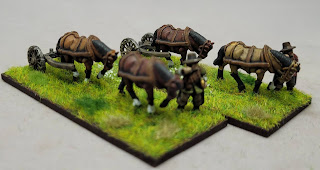Houses of Interest: Monmouthshire
The inappropriately named ECWtravelogue returns across the border into Wales, this time dipping its toe into Monmouthshire.
 |
| The entrance way to Chepstow Castle |
Chepstow was an important trade route on the River Wye, and into the Welsh Marches. Understandably the stronghold of Chepstow Castle dominates the river, towering over the river, situated on top of the cliffs.
 |
| Chepstow looming over the Wye |
During the First Civil War the castle was surrendered to Waller's Parliamentarian forces who had surrounded the castle (but never really besieged it) for two years, in autumn 1645.
With the resumption of war, Chepstow was again garrisoned for the King by Sir Nicholas Kemeys.This time the Parliamentarian besiegers were a little more proactive, and successful. Their artillery shot away the castle's parapets, inhibiting the defenders from mounting their guns. The Parliamentarian artillery breached the castle walls near Marten's Tower, Kemeys refused to surrender and the Parliamentarians, led by Colonel Ewer were forced to storm the castle via the breach. Kemeys and the majority of the garrison (120 men) were slain.
 |
| Memorial to Kemeys, in the castle's keep. |
Parliament order the refortification of the castle between 1650-62. The southern curtain walls were strengthened (to take artillery fire), and loops were added for muskets. Marten's Tower was given circular gun-loops, and two towers were filled with earth in order to act as gun platforms.
 |
| The remains of one of the gunports on the southern wall |
 |
| ...and what it would have looked like |
Chepstow would be used as a political prison. Two of its notable unwilling residents were Bishop Jeremy Taylor; and, after the Restoration of the monarchy, the regicide Henry Marten.
Bishop Taylor was captured at Cardigan Castle in 1645, along with a number of Royalist supporters. During the Interregnum he would be imprisoned three times, including in Chepstow Castle, from May to October 1655. Alas, we don't know the charge for his Chepstow incarceration.
 |
| Marten's Tower |
Henry Marten's stay was much longer: he was spared the death penalty at his trial in 1660, instead being sent to internal exile. Initially this was in the north of England, then to Windsor Castle in 1665. This physical proximity to Charles II, irked the King so much that he sent him to Chepstow in 1668.
 |
| Marten's Tower from the parapets |
Marten's imprisonment does not appear to have been too unpleasant, at least at first; he had a suite of rooms in what is now known as Marten's Tower, and seems to have been able to travel outside the castle on occasion.
His wife Margaret lived apart from him, remaining at the family home in Berkshire, but he was attended there by Mary Ward, his common-law wife. Marten died at Chepstow Castle on 9th September 1680, having choked while eating his supper.
 |
| This once grand sideboard was in the choir of Gloucester Cathedral during the Civil Wars, but was sold to Bristol Cathedral in 1663. Eventually its travels ended at St Mary's Chepstow. |
 |
 |
| Beachley, viewed from the Severn Bridge |
Nearby Beachley (technically in Gloucestershire I know, but it makes more sense to be included with Chepstow), was garrisoned by the Royalists; it is believed a gun battery was positioned here in order to protect Royalist supplies heading up the Severn and the Wye. The natural isthmus has its 'neck' protected by Offa's Dyke. Despite this seemingly secure position, they were routed twice from this position in 1644.
 |
| Monmouth Castle |
Monmouth Castle changed hands twice in autumn 1644. In 1645 a strong Parliamentarian army, numbering 3000 men, led by the Governor of Gloucester, Colonel Morgan; besieged the town and castle. They undermined the Great Tower, but the garrison surrendered before the besiegers could blow the mine.
The garrison would surrender seven artillery pieces, a large number of muskets and powder, as well as great stores of food."That the Town and Castle of Monmouth be disgarisoned, and the Works slighted"
The King's Head, was supposedly visited by King Charles. Although its history seems a little confused, was it Charles I or (the future) Charles II who visited? Did the visit take place in 1625 or 1645? The story changes depending upon the source: is this a case of wishful thinking or just misremembering?
Monmouth Museum is currently relocating to Shire Hall, and currently has a small display of its collection on view. Most notable, amongst its collection, and on display is a sixteenth century Monmouth Cap.
There are a number of contemporaneous buildings, and structures that will have witnessed the events of the Wars.
Most notable is the Monnow Bridge, a medieval gated bridge. The bridge now protects access to Waitrose from ruffians.
 |
| The Robin Hood |
Close to the bridge is the Robin Hood Inn, a much older building that has many seventeenth century features preserved inside.
 |
Postcodes for SatNavs
Chepstow Castle, Bridge Street NP16 5EY
Cromwell House, 10 Bridge Street NP16 5EZ
Chepstow Museum Bridge Street NP16 5EZ
Priory Church of Saint Mary, Upper Church Street NP16 5HA
If you enjoyed reading this, or any of the other posts, please consider supporting the blog.





















Comments
Post a Comment